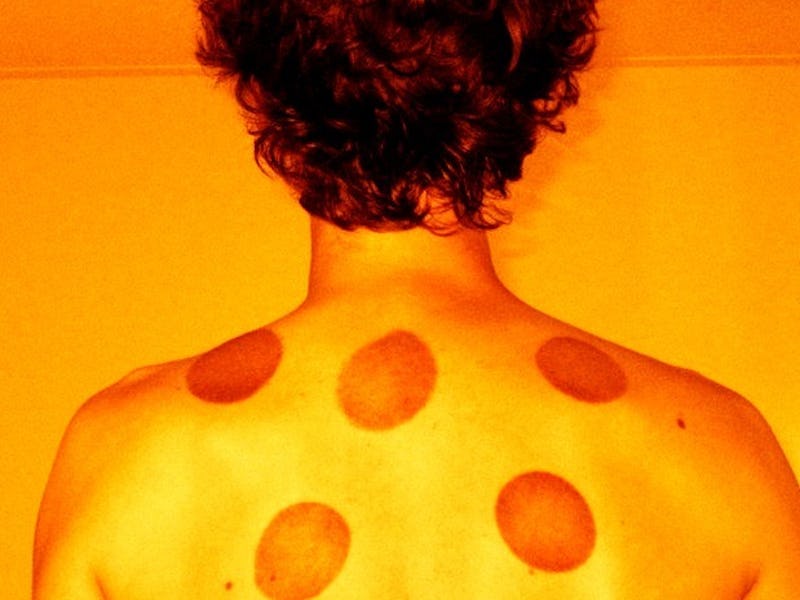What Science Actually Has to Say About Cupping Therapy
Don't discount the value of the placebo effect.

The liver-purple spots that sprouted on the toned bodies of Team U.S.A. swimmers and gymnasts during the Rio de Janeiro Olympics were as eye-catching as their medals. More recently, similarly alarming pepperoni-sized spots appeared on the bulging forearms of Canada’s leader, Justin Trudeau. While relatively uncommon in the U.S., the spots aren’t that unusual in Asian countries, where they simply denote that the bearer has undergone a traditional body-purification process.
The technique, known as cupping, uses hot cups to concentrate blood in certain areas of the body to suck out impurities with a vacuum. It’s been a mainstay in traditional Chinese medicine for centuries but more recently has gotten traction in Western athletics as a recovery tool for elites. To create suction, practitioners turn over the circular cups onto their skin, then either heat the cups or apply an air pump to them. Overall, the effect is somewhat like receiving a hickey: The vacuum effect breaks the delicate vessels beneath the cup, allowing blood to seep out and pool under the skin’s surface. The result is a perfectly round bruise — and the belief that it’ll speed up recovery.
The idea is that bringing blood to overworked areas speeds up recovery by increasing blood flow and reducing soreness. Physiologically, it makes some sense: To rebuild muscle that’s torn apart during strenuous workouts, the body needs nutrients, such as energy-rich glycogen and muscle-forming amino acids, which travel via the blood stream. Soreness is caused by a buildup of lactic acid in the muscles, which is naturally whisked away by rushing blood. Bringing more blood to certain areas and rapidly releasing it using cupping should, in theory, speed up the process.
Cupping marks were recently spotted on the forearms of Justin Trudeau.
A comparison of the effects of cupping with those of a healing technique known as progressive muscle relaxation, published in 2012 in the journal PLoS One, suggested that the ancient practice was better at improving “well-being and decreasing pain,” but the uncontrolled study, involving only 61 people, wasn’t exactly conclusive.
But just because the placebo effect is triggered by psychological rather than physical means, however, doesn’t suggest that it isn’t as powerful. Just as Dr. Ted Kaptchuk’s famous fake-acupuncture trial revealed pain relief could be administered without the needles, it’s entirely possible that cupping causes psychological pain relief in much the same way.